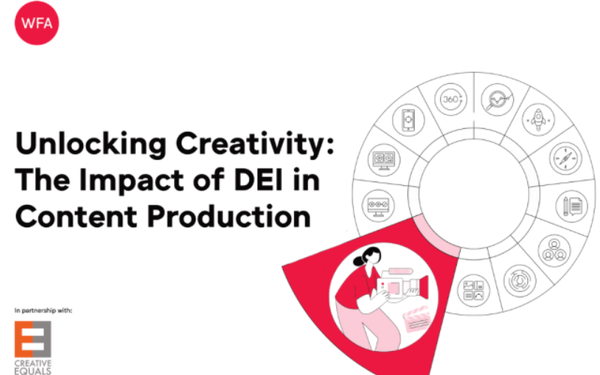WFA: Marketers Struggle With DEI Efforts In Production Space
- by Steve McClellan @mp_mcclellan, June 16, 2024

New research from the WFA reveals that nearly half of major multinational marketers (49%) are struggling to measure Diversity, Equity and Inclusion (DEI) efforts in the content production space and the same number find it hard to set consistent targets across markets and suppliers.
advertisement
advertisement
Many marketers – about a third, according to the new research – are just beginning to incorporate DEI initiatives into their advertising production operations with almost a quarter of those indicating they have only started to consider it this year.
More than four in 10 are also struggling to identify diverse suppliers, with 22% saying that while driving DEI initiatives in the US is more straightforward, the rest of the world is a challenge. While 24% of those polled describe their efforts in North America as “very mature,” just 16% say the same is true for their initiatives in Europe and 4% in LATAM. APAC and MEA efforts are virtually undetectable.
The results are based on responses from executives at 32 different companies with a total cumulative marketing and media spend of $81 billion last year. Seventy percent of respondents had global roles.
The new research is highlighted in the WFA’s first-ever guide to embedding DEI in the content production process. Unlocking Creativity: The Impact of DEI in Content Production was developed by members of WFA’s Diversity & Inclusion taskforce in conjunction with DEI consultancy, Creative Equals, and outlines key processes that brands can rely on as they work towards improving their DEI performance and track outcomes.
The playbook offers a collection of best practices from brands like Diageo, Haleon, Pepsi, P&G, Reckitt, Visa and Unilever.
Other key findings from the research include:
- 36% of brands indicate they will start tracking the representation of production talent this year; 28% already track this internally or via an external partner
- 12% say they always align on DEI goals and KPIs in production, with 24% saying they do so "very frequently" and a further 41% doing so "occasionally"
- One in five brands (21%) always make sure their casting specs clearly require a diverse range of races, ethnicities, genders, ages, ability and including veterans; 29% do the same "very frequently" and 21% do so "occasionally"
- Only 6% say they are always aware of how their production partners recruit, support and develop diverse talent; 18% do so "very frequently" and 24% do so "occasionally"
- Just 6% of respondents say they always offer DEI training programs to production partners to help educate and foster inclusive behaviors and to stop unconscious bias; 18% do so "very frequently" and 15% do so "occasionally"
“In the fast-paced FMCG advertising sector, the rush to produce content quickly and on reduced budgets often compromises preparation, support, and safety on set,” said Elizabeth-Peyton Jones, founder and CEO, Talent Trust. “The lack of diverse crew, the inadequate translation of essential documents for foreign language speakers, and the scarcity of women directors highlight critical inclusivity gaps. Addressing these issues requires a consolidated, concerted effort with adequate resources and a unified direction to build an infrastructure that supports diversity, equity, and inclusion in every production aspect.”


